#deseretgear
Note
So I know that the coffin of andy and leyley really like, builds up to their incestuous *sex* only happening when they're adults (and after you make specific choices)
But since there were obviously incest vibes from start...
do u have any headcanons/ideas for incest/sexual things between them as kids? :3
Just a few because I do NOT want to get murdered by this fandom but
They absolutely practiced kissing with each other, 100%. Neither of them will acknowledge that their first kisses were each other, because Andrew is in denial 24/7 and Ashley doesn't count them because they weren't real kisses, but they were. Ashley convinces Andrew by threatening to kiss a different boy at school lmao
Ashley made sims of their characters to be together, creating her idealized version of a perfect future for them. Apparently TCOAAL is supposed to be set in the early 2000s but if she'd had access to incest mods, she would've been ALL OVER THAT SHIT.
A lot of playing house together, with Andrew as the working husband and Ashley as his housewife, in the way that only kids can conceptualize that sort of thing. It went on a lot longer than it typically does for kids their age and their mom HATED it, but her trying to stop them just made both of them cling onto it even more.
Ashley declaring to literally everyone that she would marry Andrew when they grew up. Not uncommon, a lot of kids do that, but that continued into their early teens and he never agreed but he didn't argue either.
The sleeping together absolutely did not start with Andrew's "nightmares" about the quarantine and murders. They've been secretly sharing a bed for most of their lives.
They've also always been generally very clingy and touchy, Andrew always keeping his arm around Ashley or pulling her against his side, Ashley always pressing against Andrew or sitting on his lap at any opportunity. That scene on the couch is NOT the first time their mom has walked in on them with Ashley on her knees and her head in Andrew's lap.
Puberty for both of them involved a lot of overhead mumblings in their sleep and muffled moans of each other's names from across the room, things they never dared to even mention to each other.
26 notes
·
View notes
Text



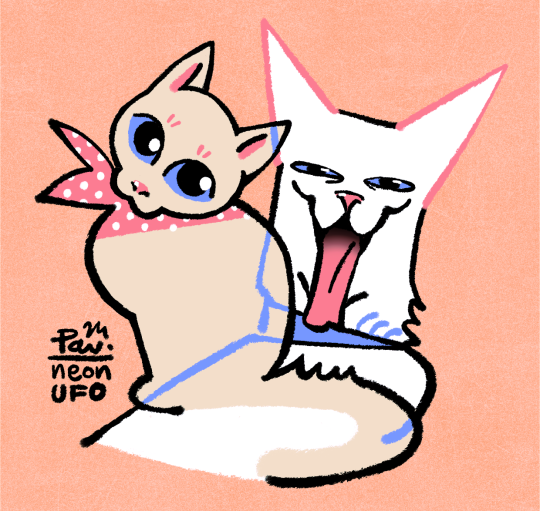

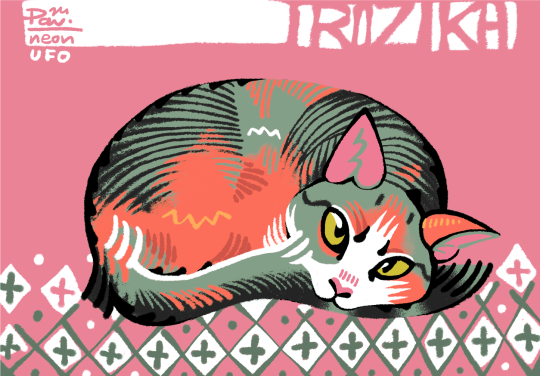


some kitties!
white woman yvette is lithping's, tuxedo Boris belongs to a friend of a friend, fluffy tux Babygirl belongs to deseretgear, pastel calico and sleepy tuxedo are Rozika and Sido, they are my parents' cats, the sinister smiler is oafishwoman's Pompom and of course, Navid is my oriental shorthair <3
575 notes
·
View notes
Text
Tumblr Bell Songs Compiled from the Notes on that One @Unpretty post
I @ everyone I grabbed from, some are probably repeats and some I def. missed but here’s what I got! Thanks to @unpretty for revealing to me the bells
Non-Christmas Songs:
concerning hobbits @fipindustries
1235321
3568753432
123532121
35666
66532321
"Lord of the Rings" @limulusamebocytelysate
1235321
35687532
123532121
356 (pause) 532 (pause) 1
Mary had a little lamb @prisma-the-spooktacular
6545666
555688
6545666
655654
Carry On My Wayward Son @parvasilvi
1358755654
13587532
1358755654
123211
smash mouth all star @snow4berry
4 86 6 54 47 76655 48665 44221
44 8665 5447 7665 548 866 5 45 2
M*A*S*H theme @heroofthreefaces
78787876
67676765
56565654
45454567
6767676
767676
3456787656
Do-re-mi: @prisma-the-spooktacular
1231313 2344324 3453536 4566546 5123456 6234567 7345678 876475 8532
(celine dion - my heart will go on :3c) @something-about-sunflowers
4 44 434 4 3 4 5 6 5 4 44 434 4 1 (x2)
little off on this next part but
4 5 1 8 765 6 765 43432
Never Gonna Give You Up @bedheaddeadhead
1131665 1131554
113145 321 154
mr. sandman @foolishmortal
13 57 65 3
1 24 68 7
wonderwall: @marghen
32121212 212121231
3212122 21221231
353556531 22231 8678
32121212212121231
321212221221231
353556531 22231 8678
78267826786
78267826786
8267826 632231 1123216
331—
717171131—
3451—
3343321—
twinkle twinkle little star: @unpretty
1155665 4433221
5544332 5544332
1155665 4433221
this old man: @unpretty
535 535
6543234
3451111 12345
5224321
“His Theme” (Undertale): @patema-introverted
1541334 141334 1541334 146545
Hanukkah Songs:
the dreidel song: @mishafletcher
535353 355432 424242 454321
Christmas Carols:
Joy to the world: @prisma-the-spooktacular
8765 4321 56 67 78 887655 43 887655 43 333345 43 2222 34 21 8765 4321
Ode to Joy! @ardatli
3345 5432 1123322 3345 5432 1123211 231 23431 23432 125 3345 5432 1123211
Santa Claus is Coming To Town @phlebasphonecian
53455
56788
345556544
35132421
The First Noel @phlebasphoenician
3212345 678765 67876 5678543
3212345 678765 6787656 78543
321345 87665 8765678543
Rudolph the Red-Nosed Reindeer- @incognito-princess
5653865 5656587 4542765 5656563 5653865 5656587
4542765 5656587
6676535 46543 2356777 8876542 5653865
565687 4542685 454578
It Came Upon A Midnight Clear @boomstab-papa
16 35421 21
12344565
16 35421 21
12 23214
66 11234 56
55432321
16 35421 21
12 23214
joy to the world @Unpretty
87654321
566778
88765543
88765543
3333345
4222234
321865434321
Jingle Bells @runawaymarbles @mhalachai
14321
1115432
25432
66535
14321
15432
22543
666
676521
333 333 35123
4444 43333 3223 2 5
333 333 35123
4444 4333 554 2 1
In Excelsis Deo / Angels we have heard on high: @vimpiritea
333 55 43
323 5 3 21
333 55 43
323 5 3 21
5 65434
54323
43212 55
1234 3 2 1
we wish you a merry christmas if you're willing to get a little creative with the octave @hi-my-name-is-dotdotdot
58828766
62232875
53343286
556278
feliz navidad / we wanna wish you a merry christmas @hi-my-name-is-dotdotdot
58786 72865 58786 4665555443
3333211666 2222166555 3333211666 587721
it feels like christmas: @beggars-opera
11112345 5653
33343234 4542
33212365 532155
11112345 5653
33343234 4542
33212365 532155
55 565534
4543223
343215
65 5655334
4543223 343215
11112345 5653
33343234 4542
33212365 532155
33212365 43211
34355
77788
34355
Adeste Fiedles is (roughly, the bells don’t have accidentals) @thenoonesenseofladypole
552562
767876
5542456
74311
The First Noel: @deseretgear
3212345
678765
678765
678543
3212345
678765
678765
678543
3212345
87665
8765678543
Silent night @castisteard
5653 5653
886774
556543432
556543342
6676536
6434321
The first notes of Good King Wenceslas @theyhaveacavetroll
4445441
212344
we wish you a merry christmas @alabaster-moon
1 4 45432 2
2 5 56543 1
1 6 67654 2
112 5 3 4
1 4 4 4 3-
3 4 3 2 1
5 6 55448 1
112 5 3 4
we wish you a merry christmas: @distant-daydreams
14454322
25565431
16676542
112534
little drummer boy: @distant-daydreams
12333 34343
112333 34343
234555 65432
234555 67654 6543 5432
12333 34343 2121
Good King Wenceslas @damnsmartblueboxes
5556552
323455
5556552
323455
8764543
323455
2234556
8764 5--7--5
Miniature Overture from the Nutcracker: @extra-magichours
1 4 3265 1 4321 3 2
1 4 3265 86543231
This is the chorus to my favorite Christmas Carol: @emberlark
2342665
1231554
234245321 154
2342665
1231854
234245321 154
Away. In a manger @saiiditallbefore
887665 44321
112115 32135
887665 44321
154352 23121
here’s feliz navidad: @capsie
14 342
25 421
14 342
1211111111 (can’t go lower :[)
(repeat x times)
6666 544 222
5555 422 114
6666 544 222
5433
35 5 654 (repeat x times)
this is the best I could do for “greensleeves” @runawaymarbles
234565421
23422
12311
234565421
345432123
8876531
12422
12311
8876531
234222123
Carol of the Bells @dracificia
3231323132313231
3231323132313231
888765554344453211
888765554344453211
193 notes
·
View notes
Text
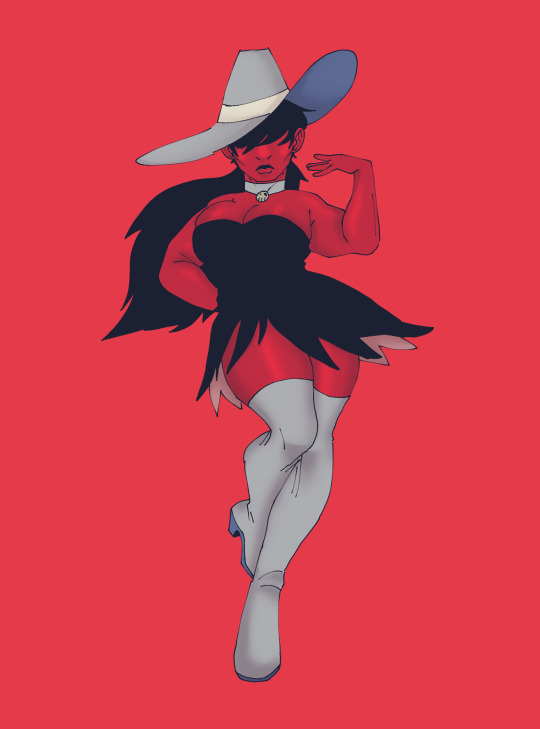
Commission finished for @deseretgear <3
13 notes
·
View notes
Text
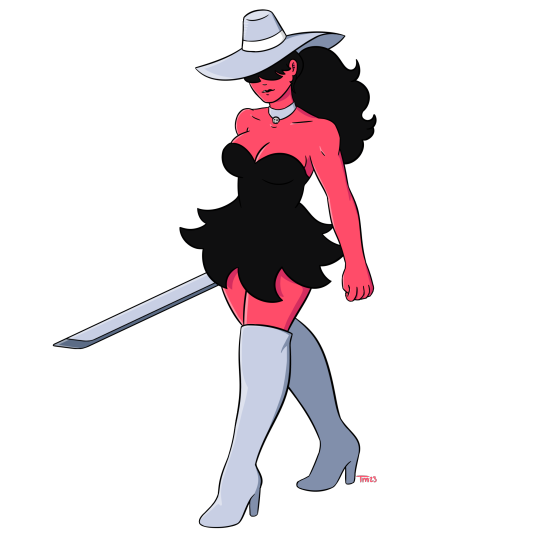
Artfight attack for @deseretgear !
1 note
·
View note
Text

Thank you for the ask @deseretgear!
I think I'd be something small like a Gulpin or Seedot, or maybe a Komala cuz they sleep all the time.
Marta (the main character in my webcomic) would probably be a Trevenant, for reasons I can't get into without spoilers~
I've still got like an hour and a half of my layover! Feel free to send more asks if so desired
0 notes
Note
Do you know any good metroidvania style games like hollow knight where the emphasis is on exploration and occasional fighting but no boss battles? I like games with relatively free exploration and I don't mind combat when it's simple and smaller scale but I hate boss battles (fighting a big scary thing that stops the story until I pass it and requires sustained action to defeat). Basically I do not have quick reflexes and can't handle "git gud" games with my attention span.
Afraid not. When it comes to 2D puzzle platformers, you can generally have any two of the following three features:
Nonlinear exploration
Metroidvania-like upgrade progression
Low or no combat focus
Ask for two out of three, and I could name any number of games. All three? The only thing in my library that really fits the bill is Dreaming Sarah, and even that’s an edge case -- it’s technically nonlinear, but the intended route is pretty strictly enforced.
(Now, if you were willing to lose the upgrade progression, that’d be another story. Hiiro and The Moonstone Equation spring readily to mind. Maybe Saira, too, though there’s some tricky platforming in that one.)
82 notes
·
View notes
Note
(sorry this is long) I'm creating a fantasy matriarchal society that's a combination of like America post WW2 and like the amazons/valkyries crossed with magical girls. I could use some help figuring out the gender dynamics, since part of my goal is to use the swap to highlight some inequalities that still exist in our gender expectations today by flipping them. I'm trying to figure out if it's better to have the men be primary caregivers (1/?)
since there’s no reason to assume that the gender that gives birth has to be the caregivers) or if I should go the “matriarchal society would value childrearing above other jobs” route. Some thoughts I had: Women are the main magic-users in society (magical girl/amazons blessed directly by the god who rules the city with power)and that perhaps all young women are expected to go through military service of some sort before becoming matrons, politicians and doctors. (2/?)
Maybe women are associated with Life and Death and “important duties” that revolve around them, including duties regarding both killing and saving lives. So healing, leading armies, fighting, hunting, childbirth (possibly care?) and politics are feminine jobs, while “lesser duties” that revolve more around menial labor are relegated to men (manual labor, maintenance, ‘uneducated’ jobs, support jobs like scribe and secretary, cooking, cleaning, perhaps some jobs like fashion design or art). (3/?)
Do you think this is a good balance? What are some other ways I could divide gender roles? The world situation is a magical land with about early 20th century level tech (trains and private schools and like phones/radios).Also, what is the best way to objectify men in this society? I was thinking of making it so men are seen as useless/only for the purpose of providing sexual pleasure and siring children to women. (4/?)
They don’t’ actually create children or take the ‘important jobs’ (the poor dears just don’t have the brains for it, they’re too simple and direct, men don’t have the emotional maturity to handle serious issues, they lack empathy, they only want sex anyway so it’s not like you need to worry about their emotional needs, etc). I’d love some suggestions on how a society like this might work or if there are other ways to divide the gender roles, (5/?)
as well as some ways men might experience objectification in society. How would fashion be different, and how would this society put pressure on men to look or act in certain ways (and women as well). Any suggestions? Thanks, and sorry for the long question(6/?)
Mod Miri Note: If you have a question that requires multiple asks, please use the google form! That way there’s no risk of parts of the question being lost.
Tex: “Do you think this is a good balance?” No, I do not. I disagree with the notion that a group of people ought to be objectified, neglected, abused, pigeon-holed, or otherwise mistreated under the guise of inversion as a way to tout a certain prescription of thought. I think this methodology perpetuates stereotypes, and with stereotypes come all the -isms that are used as excuses to treat people poorly just because they’re different from the originating group.
I’m going to be radical and say “none of the above”. There’s a few reasons for my answer, but aside from the brief overview in the previous paragraph, let me go through and try responding to all of your points in a more precise manner.
Let’s start with American culture post WWII - and I’m going to assume that, because of this choice, you’re working from an American perspective. This is important! But I’ll handle that detail in a bit.
Post-WWII culture is heavily influenced by WWII culture. For women, this meant enlistment in the military, as well as filling the gaps in the domestic labor force left by men being shipped off (History.com, The Atlantic). Their service in the military - quite often voluntary - was as critical and crucial as their domestic work (Wikipedia 1, Wikipedia 2, Wikipedia 3). They usually received lower pay than men, true (though interestingly the women in the UK were often treated better; Striking Women), though governments of the time admitted that without women the war effort would have crumpled.
Rosie the Riveter is a popular piece of propaganda (where it was also considered patriotic for women to join the workforce and military service; National Women’s History Museum), but don’t let that dissuade you from thinking that women were not recognized for other types of work during the war. Many women in the US were recognized for their military service (USO), and other women’s histories endure today - Lyudmila Pavlichenko (Wikipedia), Vitka Kempner (Wikipedia), and Virginia Hall (Wikipedia). I’m going to toss in the official synopsis of Queen Elizabeth II’s involvement in her own military to round things out (The Royal Family), complete with a picture of her in uniform (Wikipedia).
Many women after the war went back to strictly domestic duties, and I think that parallels their wartime efforts - both situations are of the “all hands on deck” type, but the play of gender roles here means that the duties of a functioning society are divvied up by different functional spheres - and make no mistake, men and women relied on each other equally as much to cover the gaps, despite the sexism inherent in modern Western society. The difference between war and non-war time cultures was that the latter wasn’t necessarily cultivated by patriotism that could unite the different “factions”. The Oxford Research Encyclopedia of American History gives a thorough examination of this topic.
The following era - typified by the birth of the Baby Boomer generation - saw a marked increase in economic prosperity (Wikipedia). With that came increased social mobility for women (Citation 1), usually catalyzed by the actions of their fathers (Citation 2). This may typically be achieved by consistent, conscientious public policy formation (Citation 3). In short, many cultures - if they haven’t already - are realizing that it’s good for business to let women control how they participate in society and the flow of money.
In the US, this was precipitated by the boom of social development (American History; archived version). Aside from the Truman administration negotiating price fixing to prevent inflation, a significant factor was the passing of the Servicemen’s Readjustment Act of 1944 (AKA the G.I. Bill). This primarily benefited the Greatest Generation, though other pertinent legislation by the 79th Congress benefited the Silent Generation onwards: the Fair Deal, Revenue Act of 1948, Taft-Hartley Act, Employment Act of 1946, National School Lunch Act, and Hobbs Act.
It’s debatable how well this impacted long-term economic development, considering the almost immediate rise of McCarthyism in the US in 1947, which was heavily intertwined with the Truman Doctrine that precipitated the Cold War. The results of the war, at least economically, were… mixed (Wikipedia 1, Wikipedia 2). I have no doubt that this impacted the social mobility of women in all affected countries - which is all of them, but I’m sure hairs could be split on this if you wish.
Now that we’ve got that out of the way, let’s tackle the Amazons.
The modern, popular interpretation (that is slow to be shaken by archaeological evidence) is mostly mythological (Wikipedia). While some ideas are thrown in the way of a Minoan Crete ancestry to the myth, there are more similarities drawn to the Scythian and Samartian cultures on the Eurasian Steppe (CNET). It’s possible that instead of the equally-extreme pole end of the gender dichotomy that is patriarchy-matriarchy, the Scythians just scandalized the Athenians with a comparatively more fluid society (Smithsonian Magazine).
As for Valkyries… there’s been a revival of them in pop culture, probably as a net-casting to see what’s out there aside from Amazons. TVTropes covers the many, many ways media utilizes them as a trope, to varying degrees of mythological and cultural accuracy. As they state, valkyries are a form of psychopomp, as they decide who among the battlefield’s dead will go to Valhalla (ruled by Odin) or Fólkvangr (ruled by Freya). Freya seems to have assumed the “type” (as opposed to characteristics salient to a particular individual) of a valkyrie, as the female counterpart the warrior archetype. To wit, Freya herself may be a type (Wikipedia).
Here’s where the issue gets thorny - modern popular understanding of valkyries, and by extension Scandinavian women, is skewed through the modern lens.
@fjorn-the-skald has a lovely series called Viking History: Post-by-Post, or An Informal Crash Course & A Historical Guide to the Vikings, that typically focuses on medieval Iceland. In his post “Lesson 13.c - Women in the Viking Age, Part III: Were Women “Vikings”?”, discusses the particular penchant of modern times to romanticize and/or skew history to their own biases - in this instance, how medieval Icelandic women functioned in their culture, as well as how valkyrie myths play into this.
The TL;DR of that is: “viking” women were a societal anomaly, the battlefield was a male domain (and they were expected to die on it), a woman’s prowess of the domestic sphere was highly respected to a level often equivalent to men, and the domestic sphere was the sphere of commerce. Scandinavian culture prized strong women, just as they prized strong men, and their culture rested upon the concept of different genders having their own distinct, complementary, and equal domains.
Fjörn builds upon this history in an ask about gender roles outside the usual dichotomy of male-female. Valkyries, and shield-maidens, may be classed as a third gender in medieval Scandinavian culture, because women were temporarily occupying the male role in their society. While valkyries are of divine origin, shield-maidens are not, though they seem to have taken on a supernatural bent by performing feminine qualities while living in the male sphere (something that they can literally wear, by the donning of their armor).
That probably comes across as distasteful to, especially, a modern American perspective, but many ancient cultures are like that. There’s a footnote on that ask about links to a contemporary perspective of same-sex relationships, as well, to round out that talking point.
With those historical and mythological details discussed, let’s move on to magical girls.
Interestingly, the genre and trope derive from the American TV show Bewitched (Nippon.com). Its evolution reflected Japan’s changing tone about female sexuality, focusing on girls. Magical Girl doesn’t seem to be intended to attract the male gaze in a sexual light - and in fact was generated as a form of female empowerment by by way of growing up (TVTropes), but it seems to happen anyways (TVTropes).
Magical girls, as a genre, originated in the 1960s - the archetypical Sailor Moon encompasses not only magical girls, but also the kawaii aesthetic. Kawaii, incidentally, followed after the magical girl trope, and plays upon women performing as girls in society.
As magical girls are intended for young girls, a demographic known as shōjo, it is considered a subgenre of the target audience. Please note that shōnen'ai (Fanlore) and yaoi (Fanlore) are also subgenres of shōjo.
For some context, the adult female target audience is known as josei, the young adult men is known as shōnen, and adult male audience is known as seinen. Many manga and anime are often misattributed to the wrong category, so it helps to know which is which, and why.
Kumiko Saito argues (through an unfortunately paywalled article that I’m more than willing to disseminate to those without JSTOR access) that magical girls reinforce gender stereotypes as well as fetishize young female bodies. She argues this point more eloquently than I can, so I’ll be quoting a few sections below.
Page 148 (7 of 23 on the PDF):
The 1960s “witch” housewife theme waned quickly in the United States, but various cultural symbolisms of magic smoothly translated into the Japanese climate, leading to Japans four-decade-long obsession with the magical girl. Bewitched incorporated the concept of magic as female power to be renounced after marriage, thereby providing “a discursive site in which feminism (as female power) and femininity has been negotiated” (Moseley 2002, 403) in the dawning of Americas feminist era. Japans magical girls represented a similar impasse of fitting into female domesticity, continued to fascinate Japanese society, and came to define the magical girl genre. In direct contrast to the American heroines Samantha and Jeannie, however, whose strife arose from the antagonism between magic (as power) and the traditional gender role as wife or fiancée, the magical girls dilemma usually lies between female adulthood and the juvenile female stage prior to marriage, called shõjo. In other words, the magical girl narratives often revolve around the magical freedom of adolescence prior to the gendered stage of marriage and motherhood, suggesting the difficulty of imagining elements of power and defiance beyond the point of marriage. In fact, these programs were broadcast exactly when the rate of love-based marriage started to surpass that of miai (arranged marriage),4 which implies that the magical girl anime, founded on the strict ideological division between shõjo and wife/mother, may have been an anxious reaction to the emergent phase of romance.
Page 150 (9 of 23 on the PDF):
The combination of magical empowerment and shõjo-ness framed by the doomed nature of transient girlhood naturally created ambivalent, messages in Akko-chan as well. In the societal milieu in which Japan was undergoing the politically turbulent era of Marxist student movements at the largest scale in the postwar era, Akko-chan’s super- human ability to transform into anyone (or anything) is quite revolutionary, implying a sense of women’s liberation. Despite this potential, her metamorphic ability never threatens gender models, as she typically dreams of becoming a princess, a bride, or a female teacher she respects. The use of magic is also largely limited to humanitarian community services in town. Akko-chan’s symbolic task throughout the series focuses on how to steer her power to serve her friends and family, leading to the final episode in which she relinquishes magic to save her father. Akko-chan embraces the cross-generic mismatch between the radical idea of empowering a girl with superhuman ability and the hahamono [mother genre] sentimentalism idealizing women’s self-sacrifice. All in all, the new setting adopted in this series, that a mediocre girl accidentally gains magic, became a useful mechanism for the underlying theme that the heroine is foredoomed to say farewell to magic in the end. This rhetorical device transforms latent power of the amorphous girl into the reappreciation of traditional gender norms by equating magic with shõjo-hood to be given up at a certain stage.
Saito discusses the thematic shifts in the magical girl subgenre in the 1980s to a more sexualized view, and the according rise of both an older audience and otaku fans, the latter of whom, she clarifies, make a habit of recontextualizing canon to categorize characters into stereotypes that are stripped of the majority of their original context.
On pages 153-154 (12-13 of 23 on the PDF):
The conventions of the magical girl genre transformed significantly against this paradigm shift. Both Minky Momo and Creamy Mami originally targeted children, recording a decent outcome in business and eventually leading to the revival of the genre. Because the plots are directly built on the genre clichés, however, the jokes and sarcasm of many episodes appear comprehensible only to adult viewers equipped with the knowledge of the Töei magical girls. The intrigue of these programs largely lies in the way they parody and mock the established genre conventions, especially the restrictive function of magic and the meaning of transformation. The genre is now founded on the expectation that the adult viewer has acquired a diachronic fan perspective to fetishize both the characters and the text’s meanings.
Creamy Mami presents the story of fourth-grader Yū, who gains magical power that enables her to turn into a sixteen-year-old girl. Yū’s magical power is more restrictive than Momo’s, for her superhuman capacity simply means metamorphosis into her adult form, who happens to become an idol singer called Mami. Given that the magic’s ability is self-oriented cosmetic effect and bodily maturation, the heroine’s ultimate goal by means of magic is to grow old enough to attract her male friend Toshio, who neglects Yū’s latent charm but falls in love with the idol Mami. The series concludes when Yū loses her magic, which correlates to Toshio’s realization that Yū is his real love. Mami’s thematic messages teach the idea that magic does not bring much advantage or power after all, or rather, magic serves as an obstacle for the appreciation of the truly magical period called shõjo. The heroine gains magic to prove, although retroactively, the importance of adolescence preceding the possession of “magic” that enables (and forces) female maturation.
It’s noted in the article that the 1990s-2000s period received criticism for showing a physical maturation of girls, so codified euphemisms via garment changes such as additional frills and curled hair were used instead. This “third-wave” magical girl challenged standing norms of its predecessors by doing things such as likening adult responsibilities (“childrearing and job training”) as a sort of game, as well as the transformation implying that the character’s power is in being herself, something that juxtaposes previous norms.
Due to shifting power dynamics and other changes in Japan’s culture, it became more common for boys to become magical girls as well, further separating the magical girl concept from a strict reflection of gender roles. As such, Japanese culture - insofar as my English-based research can guide me - no longer immediately implies a direct and distinct correlation between magical girls and the female gender.
An analysis of Puella Magi Madoka Magica (PMMM) by Tate James (2017; PDF) discusses an additional dimension of the magical girl genre. Two pertinent points of the piece is that 1.) PMMM dismantles archetypes pitting women against girls, and 2.) PMMM reinforces the gender stereotype that the best type of girl is a passive girl.
Now for the issue you’ve raised about who ought to be the primary caregiver of children.
Consistent, immediate, and continuous interaction between a mother and her child benefits both of them (Citation 4, Scientific American 1, Live Science, Citation 5, Scientific American 2, UNICEF, WHO). Mothers have a distinct neurobiological makeup that predisposes them toward caring for infants (Citation 6), and likewise infants have a predisposed preference to their mother’s voice and heartbeat (Citation 7). I would like to think that is sufficient evidence as to why nearly all cultures encourage mothers as the primary caregivers.
This said, cultivation of a father-child dyad is immensely beneficial to the child (Citation 8, Citation 9), and can alleviate the effect of maternal depression on the child (ScienceDaily). Partnered men residing with children have lower levels of testosterone but a higher risk of cardiovascular disease and adiposity (Citation 10). It’s interesting to note that higher prolactin levels in the mother’s breastmilk has a correspondingly higher level of sociosexual activity with their partner in cotton-top tamarins, which stimulates pair bonding (Citation 11), as well as in other species (Citation 12).
Paternal postpartum depression is recently recognized in fathers, to severe and reverberating deleterious effects on themselves and their family (Citation 13). Screening tools for detecting depression in Swedish fathers is not sufficiently developed, and many men may be passed over despite reaching cut-off suggestions in other criteria for depression (Citation 14).
It has been observed that while human mother and fathers have the similar oxytocin pathways, the exhibit different parenting behaviours when exposed to elevated levels of oxytocin - primarily that fathers will react with high stimulatory behaviour and exploratory play (Wikipedia).
Men being socialized in a culture of stoicism and an encouraged reaction pattern to violence have poor mental health that can culminate into death and other long-term effects (Citation 15). Suicide in the US is currently the leading cause of death at time of posting this response, that the total suicide rate increased 31% from 2001-2017, and in 2017 male rates were nearly four times higher than females (NIMH).
On the topic of magical culture: it’s incredibly difficult to research because it’s a component of overall culture, and one that’s not typically available to strangers/foreigners/the uninitiated. As such, a lot of authors default to what they already know. It’s not a bad thing, but if someone wants to reach outside their comfort zone, they’re going to have some trouble.
I’m going to go off the three, four-ish, cultures you’ve already come to us with: American, Scandinavian, Scythian/Samartian, and Japanese just to round things out.
For a very, very rough overview of America, we have:
Native Americans of the contiguous US
Hawai’i
Alaska
Whatever the colonizing peoples brought over (including, but not limited to, English, Scottish, Irish, Norwegian, German, and Italian)
Whatever the myriad cultures of Africa brought over as slaves
Hispanic
NB: I’ve put Hawai’i and Alaska as separate items because they’re not part of the contiguous US.
European settlers were of a few groups:
The merchants working on charters
Indentured servants from the merchants’ homelands
Slavs
Immigrants in post-colonial eras
This is an important distinction because 1.) contemporary culture matters a lot politically, 2.) how people came to the US determined how they and their family were treated, and 3.) the contemporary job culture determined their social class.
(Slavs, as a note, are the origin of the English word “slave”, something that Western Europeans historically liked to propagate.)
I’m not going to go into the details of everything the US has to offer in terms of cultural diversity aside from a nudge in the direction of Santería. What you pick up to research is up to you.
Scandinavian folk magic is known as “trolldom” (Swedish-language Wikipedia), and the region was known for their cunningfolk. Please note that klok/-a, klog/-e, and related words relates to the English word cloak, and these people are so named because wearing one was an integral part of how they interacted with the supernatural.
The InternetArchive has a book (albeit in Swedish) about the history of magic in Sweden, which is available in multiple formats. If you’d prefer to have something in English, you can either buy this book, or inform your library you’d like to them to buy it for you.
I’m a little surprised you hadn’t mentioned either the völva (Swedish Wikipedia, English Wikipedia) or seiðr (Wikipedia), as they’re quite a well-known part of Scandinavian folk culture. Fjörn, as always, is my first stop for this area of research, with the post “Lesson 7 - Viking Spirituality”, the Víkingabók Database, the tag of Old Norse words, and the post “Norðurbók: A List of the Tales and Sagas of Icelanders” as incredibly good starting points. I encourage you to peruse them, especially because the words you learn will help you be more precise during research.
The Scythian culture is quite far reaching, as they had occupied most of the Eurasian Steppe during the Iron Age, and much of this area can be found in modern-day countries such as Russia, Iran, and China, among others. Because of how far their peoples spread out, the Scythians intermixed with their neighbors, and as such there are sub-groups to the culture.
The Sarmatians were more Russian, as that’s where a large amount of their territory laid, and were absorbed into early Slavic culture. Both their and the overall Scythian language group is eastern Iranian.
In order to help you orient yourself, here’s a map from Wikipedia:

Description: Historical spread of Iranian peoples/languages: Scythia, Sarmatia, Bactria and the Parthian Empire in about 170 BC (evidently before the Yuezhi invaded Bactria). Modern political boundaries are shown to facilitate orientation.
Japanese magical culture is intrinsically tied to their religion, and as such it would be beneficial to read about Shintoism and Japanese Buddhism. The wiki for Japanese mythology is a thorough primer, though if you get stuck, then I’m sure @scriptmyth would be glad to help you on not only this culture, but others.
As for the jobs you’ve proposed - I’m going to jump right into scribes because the irony of that is it’s historically a male-dominated job, and is the progenitor of jobs such as “public servants, journalists, accountants, bookkeepers, typists, and lawyers”. It is, with even greater irony, European women that are noted in Wikipedia, and that medieval women are increasingly thought to have played an integral part in manuscript writing (New Scientist, Science Advances).
I’m not the best person to ask for medieval culture, unfortunately, so you’ll need someone more knowledgeable than me on the subject to direct you to the finer points.
The wiki for women in war links to a lot of lists, so I would suggest poking around for historical references by era (that will likely lead to by culture) to orient yourself on how women have participated in war in the past. There’s quite a bit of mythology to be found there, as well, so if you pick up some specific goddesses you get stuck on, then pop over to @scriptmyth.
Likewise, the wiki for women in government is an interesting read, as is women in positions of power. Since both are primarily modern-times oriented, I would suggest looking at the list of queens regnant for a more historical perspective. I would have difficulty giving you more than that, as you would need to pinpoint your reference cultures first.
As history often neglects women’s contributions to society if they weren’t a ruler or similarly powerful ruler - and, frankly, that frequently applied to men as well the further back you go - I’m going to toss a couple of starting points at you for the area of medicine:
Women in medicine § Ancient medicine - Wikipedia
Women in medicine - Science Museum: History of Medicine
One thing to keep in mind is that as goalposts changed for medicine - the standardization of knowledge and the need to attend a medical school to be legally allowed to perform medicine - the availability of women to participate went down.
Another is that medicine, historically, relied upon herbal medicine, and Wikipedia itself notes that there’s a heavy overlap with food history - something that’s traditionally a domain of women. This abstract by Marcia Ramos‐e‐Silva MD, PhD, talks about Saint Hildegard von Bingen, and the first page available tells you that medieval women were in charge of quite a lot despite not being allowed to participate in the male-dominated sphere of war. The Herbal Academy dips briefly into not only the saint, but other historical aspects of herbalism that might interest you.
The wiki of women in the Middle Ages, along with that of Hildegard of Bingen, nicely rounds out this particular topic.
I need to bring out the fact that Ancient Egypt was and is well-known for the equality and respect afforded to their women - in the interest of staying on subject, particularly in the field of medicine (Ancient History Encyclopedia). Isis was well-known as a goddess of healing (Wikipedia), an aspect she has in common with goddesses in many other cultures (Wikipedia). As an added side-note, Merit Ptah in her popularly-known context has been concluded to be an inflated misunderstanding - and misconstrued interpretation - of a historical figure with significant fabrication (LiveScience, Oxford).
The presence of women in medicine fluctuated in every culture, an in ancient times often shared some correlation with the use of magic (Citation 16). Healing, historically, has a high correlation with the supernatural - and if you care to look, women are usually responsible for the domain of the supernatural. (Or at least the feminine part, which was complementary and complemented by the masculine part.)
I’m going to hop back to politics real quick to bring up abbesses, particularly the social power they exercised as women heading religious orders. An article by Alixe Bovey for the British Library gives the TL;DR of medieval women and abbeys, though if you’d like something with a bit more detail, Medieval English Nunneries c. 1275 to 1535 by Eileen Edna Power is also available.
Abbeys, with their rise and fall, are important to modern American culture. Midwives, to be even more particular, have the most direct impact. In Western Europe, a midwife may under certain circumstances perform baptisms. This was a debated topic of its time, as baptisms were rituals of the Church, and the Church had strict regulations allowing only men to perform their rituals.
During the 1500s - and up to the 1800s, in some cases - midwives were defamed to be witches. You’ll notice that this corresponds to a standardization of medical knowledge, with its corresponding legal restrictions on who may practice medicine. For the Church, the politics playing behind the scenes of midwifery and female physicians fluctuated with their observations about women’s power relative to their own (Citation 16).
Malta is an excellent case study of this phenomenon (Citation 17), and encapsulates the movement of witchcraft accusations that took place throughout this period - something historians noted as corresponding to the rise of Protestantism (ThoughtCo). There’s some debate that the increasing orientation to wages in contemporary economy facilitated this adverse behaviour against women, as well as various other social pressures as politically mitigated by the Catholic Church (Wikipedia).
As the practice of medicine was segregated according to sex - male patients to male physicians, female patients to female physicians - there were proportionally fewer men in trades such as midwifery than women despite the medieval shift toward male encroachment of territory (Wikipedia). This corresponding money- and thus male-oriented intrusion into the female sphere of medicine can be seen with the invention of the obstetric forceps (JSTOR). The rising culture of appropriation constituted the witchcraft trials that, incidentally, influenced American culture during their colonization years.
A pertinent name to remember for American history of the witchcraft trials is Margaret Jones, a Puritan midwife and the first person to be accused of witchcraft in the trails taking place in the Massachusetts Bay Colony (Wikipedia).
The Salem Witch Trials, as an offhand note, could well be an anomaly due to ergotism (Citation 18).
One thing I’m willing to bend on - a little bit - is manual labor, but mostly because you’re describing something very similar to what’s already been invented: corvée labor. There’s plenty of other forms depending on what culture you’re going for, though unlike what you’re proposing, does not necessarily imply the direct and permanent subjugation of people.
I will absolutely quibble with the idea of “uneducated” labor equating to “less valuable” labor - universities offer non-vocational degrees, typically in the areas of research and/or religion, and guilds were created as a means of quality control (that unfortunately got out of hand and committed crimes such as rent-seeking). Women in guilds were a thing, vulnerable to the same fluctuations as their other occupations outside the house.
If we are defining “uneducated” labour as “menial” labour, then this set of occupations inherently varies by culture, as does its relative weight of importance. One example of this would be writing; it may be menial but important, whereas holding negotiations could be a “major” role but wouldn’t exist without the support of workers “less than” them.
Correspondingly, gender divisions may not necessarily mean an assignation of “lesser” or “greater” when compared against each other. In medieval Europe, at least, the creation of textiles was split along the general lines of spinning and weaving. Women held the former (hence “spinster”), and men held the latter. Spinning was often not formalized into guilds then, but it was an important cornerstone of the economy that could support entire families. A guest post on The Freelance History Writer’s blog seems to indicate that this gender division was due to influence by the Bible, which seems to corroborate with the history of both professions as detailed on Wikipedia - the further back we go, and also the less connected to Christianity, the more textile work women presided over. This granted them greater control over their presence in society, since the selling of textiles was useful leverage to support themselves and others.
A similar discrepancy can be found with agriculture. Hamer women in Ethiopia are traditionally the one to cultivate sorghum, a cornerstone crop to their diet, and they exhibit preferences in which varieties they grow according to criteria such as which is easiest to grind and long-term storage feasibility (Citation 19). Accordingly, there’s been an increasing orientation around the growing of crops rather than the pastoralist habits of their men, with trading standards occuring at one goat for one Dore (“pile of maize or sorghum”) (Citation 19).
A study examining the male sphere of hunting within a society discusses the various cultural implications of defendable vs non-defendable meat sharing, with respect to how the meat is distributed and its corresponding social range (e.g. immediate social circle vs entire community), something I find interesting given that the kilocalories obtained from meat is roughly equal to that of the female sphere-acquired agriculture/gathering (Citation 20). The division of labour along gender lines when it comes to food flow in a community seems, historically, to be both comparable and compatible to each other - a recurring theme with many of the topics I’ve already covered.
Gender roles in their historical perspective - especially the further back you go - are often complimentary to each other, and are an economical way to divide up the burden of maintaining a society to a functional level. There are plenty of exceptions to this (see: third genders), as well, and many cultures exhibit the idea that a productive person is good for society; their roles may look a little different from the person next to them, and not only is the work considered equal in terms of importance, but also with a bit of poking around, you’ll find that few cultures have harsh punishments for anyone “stepping outside” their predicted roles.
Men are already objectified plenty. That their treatment by society looks different than women’s, or other genders, is by no means an excuse to sweep things under the room and pretend that they have it best - or worse, purposefully ostracize them in a fictional work to further mock, ridicule, and isolate them. This contributes to the societal issues in your culture that you wish to address, and stems from a uniquely pervasive perspective from modern American culture that differs from many other cultures in the world.
TL;DR - The way you wish to objectify men is already being done, especially in American culture. It is harmful, and will have an impact that will reach further than you might anticipate. This approach is counterproductive to your goals, and the cultures/media you cite either directly contradict your beliefs of said sources or otherwise undermine your beliefs. It is vastly more productive to take a deeper look at the origins of the issues you wish to address in your writing, as well as the reference material that you wish to use. Learning perspectives outside your native culture will benefit you immensely, and the results could surprise you.
Citations
Citation 1 - PDF - Doepke, M., Tertilt, M., Voena, A.. (2012). “The Economics and Politics of Women’s Rights,” Annual Review of Economics, Annual Reviews, vol. 4(1), pages 339-372, 07.
Citation 2 - PDF - Fernández, R.. (2014). “Women’s rights and development,” Journal of Economic Growth, vol 19(1), pages 37-80.
Citation 3 - PDF - Duflo, E. (2012). “Women’s Empowerment and Economic Development”, Journal of Economic Literature, Vol. 50, No. 4: 1051-79.
Citation 4 - PDF - Crenshaw J. T. (2014). “Healthy Birth Practice #6: Keep Mother and Baby Together- It’s Best for Mother, Baby, and Breastfeeding.” The Journal of perinatal education, 23(4), 211–217. doi:10.1891/1058-1243.23.4.211
Citation 5 - Faisal-Cury, A., Bertazzi Levy, R., Kontos, A., Tabb, K., & Matijasevich, A. (2019). “Postpartum bonding at the beginning of the second year of child’s life: the role of postpartum depression and early bonding impairment.” Journal of Psychosomatic Obstetrics & Gynecology, 1-7.
Citation 6 - PDF - Bornstein, M. H., Putnick, D. L., Rigo, P., Esposito, G., Swain, J. E., Suwalsky, J. T., … & De Pisapia, N. (2017). “Neurobiology of culturally common maternal responses to infant cry.” Proceedings of the National Academy of Sciences, 114(45), E9465-E9473.
Citation 7 - PDF - Webb, A. R., Heller, H. T., Benson, C. B., & Lahav, A. (2015). “Mother’s voice and heartbeat sounds elicit auditory plasticity in the human brain before full gestation.” Proceedings of the National Academy of Sciences, 112(10), 3152-3157.
Citation 8 - PDF - Pan, Y., Zhang, D., Liu, Y., Ran, G., & Teng, Z. (2016). “Different effects of paternal and maternal attachment on psychological health among Chinese secondary school students.” Journal of Child and Family Studies, 25(10), 2998-3008.
Citation 9 - PDF - Brown, G. L., Mangelsdorf, S. C., & Neff, C. (2012). “Father involvement, paternal sensitivity, and father-child attachment security in the first 3 years.” Journal of family psychology : JFP : journal of the Division of Family Psychology of the American Psychological Association (Division 43), 26(3), 421–430. doi:10.1037/a0027836
Citation 10 - PDF - Lee T Gettler, Mallika S Sarma, Rieti G Gengo, Rahul C Oka, James J McKenna, Adiposity, CVD risk factors and testosterone: Variation by partnering status and residence with children in US men, Evolution, Medicine, and Public Health, Volume 2017, Issue 1, January 2017, Pages 67–80, https://doi.org/10.1093/emph/eox005
Citation 11 - PDF - Snowdon, C. T., & Ziegler, T. E. (2015). “Variation in prolactin is related to variation in sexual behavior and contact affiliation.” PloS one, 10(3), e0120650.
Citation 12 - Hashemian, F., Shafigh, F., & Roohi, E. (2016). “Regulatory role of prolactin in paternal behavior in male parents: A narrative review.” Journal of postgraduate medicine, 62(3), 182–187. doi:10.4103/0022-3859.186389
Citation 13 - PDF - Eddy, B., Poll, V., Whiting, J., & Clevesy, M. (2019). “Forgotten Fathers: Postpartum Depression in Men.” Journal of Family Issues, 40(8), 1001-1017.
Citation 14 - PDF - Psouni, E., Agebjörn, J., & Linder, H. (2017). “Symptoms of depression in Swedish fathers in the postnatal period and development of a screening tool.” Scandinavian journal of psychology, 58(6), 485-496.
Citation 15 - Pappas, S. (2018, January). “APA issues first-ever guidelines for practice with men and boys.” Monitor on Psychology, 50(1).
Citation 16 - PDF - Kontoyannis, M., & Katsetos, C. (2011). “Midwives in early modern Europe (1400-1800).” Health Science Journal, 5(1), 31.
Citation 17 - PDF - Savona-Ventura, C. (1995). “The influence of the Roman Catholic Church on midwifery practice in Malta.” Medical history, 39(1), 18-34.
Citation 18 - PDF - Woolf, Alan. (2000). “Witchcraft or Mycotoxin? The Salem Witch Trials. Journal of toxicology.” Clinical toxicology. 38. 457-60. 10.1081/CLT-100100958.
Citation 19 - PDF - Samuel, T. (2013). “From cattle herding to sedentary agriculture: the role of hamer women in the transition.” African Study Monographs, Suppl. 46: 121–133. [Alternate PDF link]
Citation 20 - PDF - Gurven, Michael & Hill, Kim. (2009). “Why Do Men Hunt?.” Current Anthropology. 50. 51-74. 10.1086/595620.
Further Reading
Harry S Truman § Domestic Affairs - Wikipedia
Marshall Plan - Wikipedia
Interstate Highway System - Wikipedia
Medieval Icelandic Law (The Grágás) – Women’s Rights: On Reclaiming Property during Separation. By @fjorn-the-skald
Fjörn’s Library
“Notes on Valkyries and the like?” by @fjorn-the-skald
Fjörn’s chronological tag on women
Epigenetic correlates of neonatal contact in humans - Development and Psychopathology
Feral: So, obviously, everything Tex just said- round of effing applause!
I do want to hone in on one specific part of your ask, “since part of my goal is to use the swap to highlight some inequalities that still exist in our gender expectations today by flipping them” and direct you to this blog post on Mythcreants specifically addressing the Persecution Flip Story and why it’s not a great idea from a social justice perspective.
Happy reading!
47 notes
·
View notes
Note
Nale vs Taln
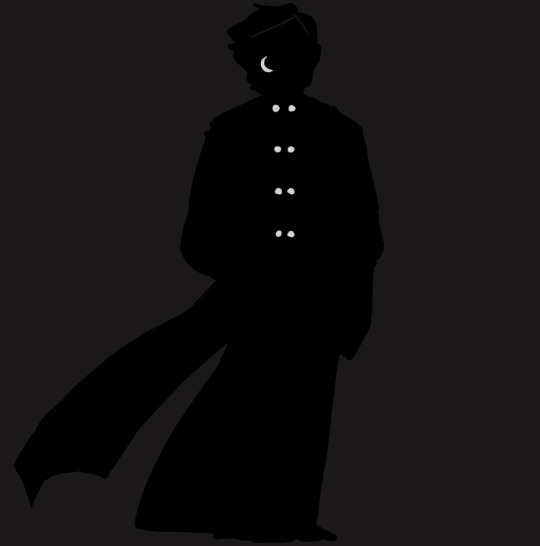
hellodarknessmyoldfriend.png
#that's actually what i named the file#nale#nothing against taln i just don't have much of a read on his personality yet#i gotta give it to the herald of bullshit he deserves it#he's the funniest character in the books!#deseretgear#asks#receiving two characters and drawing one of them ask game
70 notes
·
View notes
Photo

Second OC for the OC swap thing/ The theme/ words were teeth, chunky and eyes/.
They now belong to @deseretgear// (So If you are not them don’t use this OC please/)
#my dumb art#oc swap#deseretgear#thank you for doing this with me and I hope you like them/#monster#character design
185 notes
·
View notes
Photo

4 notes
·
View notes
Note
Alastor repeatedly mentions only doing things because they amuse him and I think Nifty amuses him! She does weird things that disturb others and he admits he doesn't know whats going on inside her head (and this seems to amuse him). Also I think her naturally more chaotic and less 'concerned with collatoral damage' behavior appeals to his own.
SO yeah my theory: Alastor is just the Jessica Rabbit to Nifty's Roger: "She makes me laugh"
[context]
Oooh, good point!! She seems to be absolutely crazy about him though and I wonder if that's just because he treats her well or if they have a history together.
14 notes
·
View notes
Note
Does space dread have 2 sets of ears to hang her glasses on
its dark magic
30 notes
·
View notes
Note
Since you're a fan of that anime with the glasses wearing rocker guy, can you explain that gif of him eating a leaf (I think its the same guy) does the leaf give him music power
I would absolutely love to give you a full explanation of this infamous gif

However… there is none.This gif is the entire scene before it cuts to a different scene.
BUT I HAVE A THEORY.
A deep, thoughtful theory which is… that Basara went on his soul-searching journey without packing any god damned food, or he didn’t pack enough. We never once see him eat any food during that arc. We see him replace his guitar strings once, meaning he packed strings, but he is never shown with food.
See, I always take notice when anime characters eat because I think it’s adorable and they always look so happy when they eat. There’s quite a few times we see Basara eat. He loves sandwiches and hot dogs. Anyway, what I’m trying to say is, this show has often shown Basara just casually eat something in the background, but during this arc, even tho there were moments where he could easy be shown eating, he doesn’t do it - except for that leaf.
It wouldn’t surprise me because he’s not the most responsible guy and is often a bit spaced out. He was also not in the best emotional state when he left.
At one point when it’s night we see him sit at the fire and just kinda stare at it like “fuck i forgot to pack food” (ok this is a joke he’s not actually thinking that but like, i brought it up because this could easily be a scene with him preparing food)

BASICALLY.
MY BOY LIVES OFF NATURE LIKE A PRO SO STOP MOCKING HIM.
EVERYONE FORGETS THINGS SOMETIMES OK???
Theory #2 is actually a ~deep~ one; He purposely didn’t pack any food to try and take himself back into the feeling of his childhood, to try to relive what drove him then.
Basara grew up homeless in a very harsh mountain environment. It’s very likely that he didn’t have much food growing up and had to scavenge nature for it.
An episode or two after this he has a dream of his younger self doing something that meant a lot to him then, and it turns into grown up him doing something that means a lot to him now. I’m not mentioning details because finding out in the last episode what he was doing as a kid was a beautiful moment.
As I mentioned before, he left on a journey in search of epiphany, and his dream might imply that he tried to get back into the shoes of his younger self to once again catch that feeling that seemed to have slipped away from him.
TL;DR - They most likely show him eating a leaf to point our attention to the fact that he didn’t pack any food - either accidentally because he was too distressed to think, or intentionally to evoke his homeless childhood.
#BET YOU DIDN'T EXPECT SUCH A PROFOUND EXPLANATION#i'll always go all out for my boy basara#macross#macross 7#basara#jimsplaining#deseretgear
47 notes
·
View notes
Note
Petition to call ourselves the BOM squad
reblog this post to join the bom squad
134 notes
·
View notes
Photo

My Secret Santa gift for @deseretgearart !
I had so much fun drawing this omg <3
-----
Please consider supporting me on Ko-fi and Patreon for more!
28 notes
·
View notes